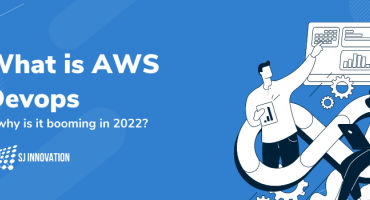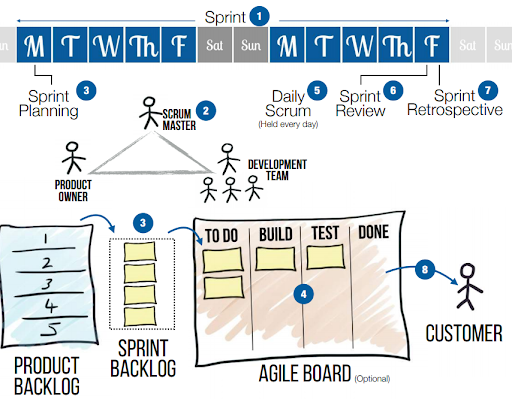The Ultimate Guide to the Scrumban Approach
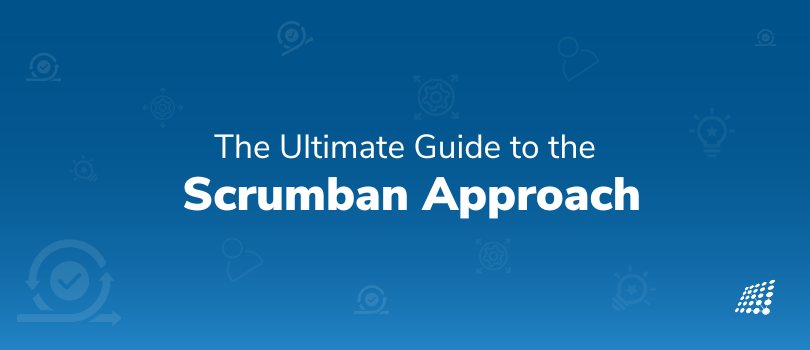
If you deal with project management regularly, there’s a high chance you’ve heard of methodologies such as Scrum and Kanban — two of the most popular processes for a project manager.
There is also another widely used approach that blends scrum and Kanban known as Scrumban!
But, before we get into it, let’s first look at Scrum, the workings of Kanban, and how it got its origin, and then head to the agile methodology what is Scrumban and get to know the Scrumban guide in detail.
SCRUM 101
Scrum is one of the most popular Agile frameworks. This is ideal for a completely new full project.
Here, the product owner (PO) decides what to build. It then proceeds to the development team who builds it and finally, the customer who experiences it. Agile software development is when the value is delivered to the customer in small increments. The product owner gathers feedback from the customers and other stakeholders and organizes it to prioritize a list of features and user stories. The scrum master helps the product owner and development team to take on the tasks for the sprint. Now, before we go into Scrumban vs Scrum, let’s get to know a few basics.
A few basics to start with
Scrum teams work in a series of sprints, ideally, sprint duration is “one month or less” but shorter sprints are better to get faster feedback from the client.
Sprint planning and sprint backlog
Each sprint starts with a sprint planning meeting - facilitated by the Scrum Master and attended by the product owner and the development team and (optionally) other stakeholders. Together, they select high-priority items from the product backlog that the development team can commit to delivering in a single sprint. The selected items are known as the sprint backlog.
The development team works on items in the sprint backlog only for the duration of the sprint. In all but exceptional circumstances, new issues must wait for the next sprint.
It’s crucial to follow the scrum/agile board to visualize and track the progress of work:
- Each day during the sprint there is a daily scrum (aka daily huddle, daily standup) meeting to discuss progress.
- During the sprint review meetings, you need to demonstrate the new functionality to stakeholders.
- Conduct the retrospective meeting to examine what went well, what went badly, and what could be improved.
- At the end of the sprint, shippable increments are packaged for release to live. (Note that some teams release more often than this). Any incomplete items are returned to the product backlog.
Image source: https://www.developmentthatpays.com/
KANBAN 101
Kanban is a Japanese term that means something along the lines of billboard and was developed by Toyota in the 1950s for manufacturing purposes. Kanban is visual workflow management that has roots in manufacturing. Work items are represented by cards on a board, with lanes that represent process steps.
Boards are used by teams to manage the collective work of the team. Measure the lead time (average time to complete one item, sometimes called “cycle time”), and optimize the process to make lead time as small and predictable as possible.
Essentials to know of the Kanban approach
Kanban is a continuous process. It is the job of the agile coach (if present - not all Kanban teams have one) to help the product owner and the development team develop and maintain good habits.
Items are “pulled” directly from the product backlog. Each column has a strict Work in Progress (WIP) limit. The WIP limits ensure that items move across the board in the shortest possible time.
An empty - or nearly empty - column is a signal to the previous column to send another item. This is the “pull” system in action.
The daily standup is a short standup meeting attended by the agile coach, the product owner, and the development team.
- Each item is packaged for release as soon as it is ready.
- A demonstration of new functionality is conducted for stakeholders.
- A look at what went well, what could be improved, etc is done which aims to improve the processes accordingly.
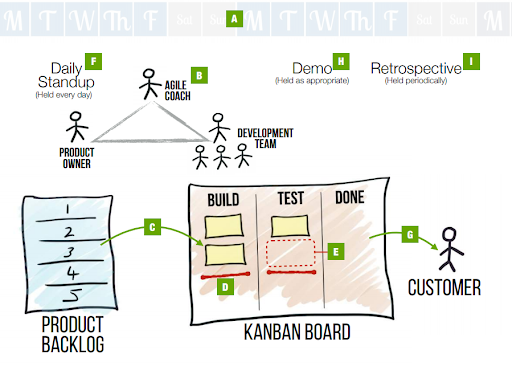
Image source: https://www.developmentthatpays.com/
SCRUMBAN (Scrum + Kanban) 101
If you’re wondering when to use Scrumban vs Kanban, know that Scrum is the strictest of the three practices since it follows a pre-defined set of rules. Comparatively, Kanban provides a looser process. Scrumban is set in the middle of these two approaches.
Scrumban is a hybrid methodology that intelligently takes the pros of Scrum and Kanban. The result? It becomes ideal for continuous and fast-paced projects that may otherwise feel like a challenge because of limitations with Scrum and Kanban. Scrumban tools follow a methodology that is flexible enough to be used for long-term as well as short-term projects.
Scrumban combines the structure of Scrum with the flow-based methods of Kanban. Here are the elements of Scrum that are incorporated into the Scrumban method:
- Scrumban planning involves iteration planning at regular intervals, synchronized with reviews and retrospectives.
- Decide how much work the team can put into the sprint based on the complexity of the work and the length of the sprint.
- Prioritization on demand -provides the team with the best thing to work on next - no more or less.
- Assure the necessary level of analysis is conducted before starting development (Definition of Ready).
- Use the “ready” queue (between Backlog and Doing) to organize.
Kanban adds process improvement, visualization, and more value metrics to the Scrumban framework.
Elements of Kanban used by Scrumban teams
These are the elements of Kanban that are used by Scrumban teams:
- Pull system and continuous workflow: Pull items into doing as the team has capacity.
- WIP limits: Explicit limits on how many items are in progress at any time.
- Individual roles not clearly specified.
- Short lead times: Emphasize just-in-time analysis and planning (rather than batch-processing for iteration planning estimations).
- Use process buffers and flow diagrams to expose process weaknesses and identify opportunities for improvement.
- Focus more on cycle time than burndown (if cycle time is predictable, burndown is predictable).
- Use policies to make process step transitions clearer.
Scrum to Scrumban in 6 Steps
To follow Scrumban best practices, getting from Scrum to Scrumbam is a good start. Here are 6 steps that take you from Scrum to Scrumban in 6 easy steps!
- Visualize the work using the Kanban board
- Impose work limit
- Add more columns
- Start ordering
- Stop estimating
- Trigger planning
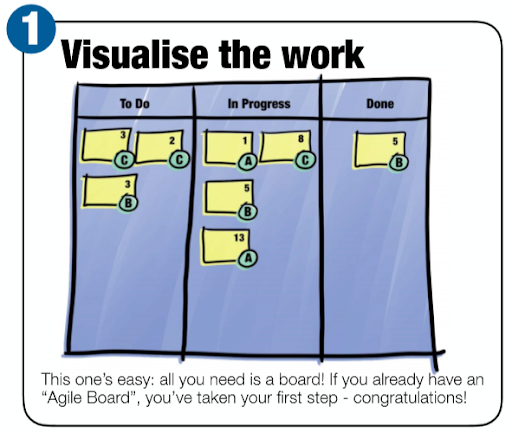
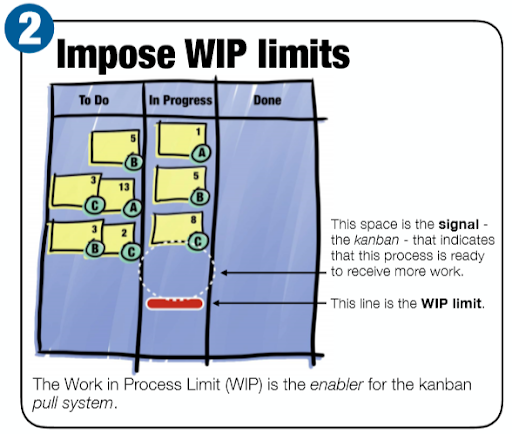
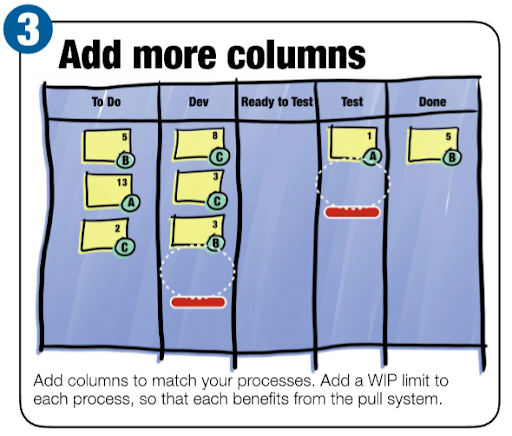
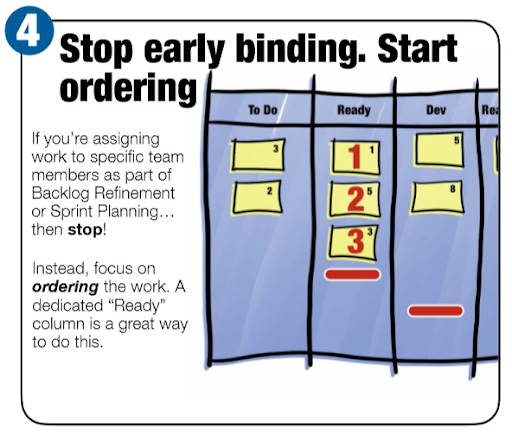
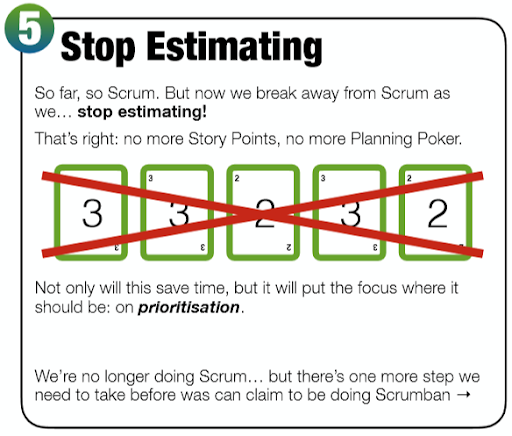
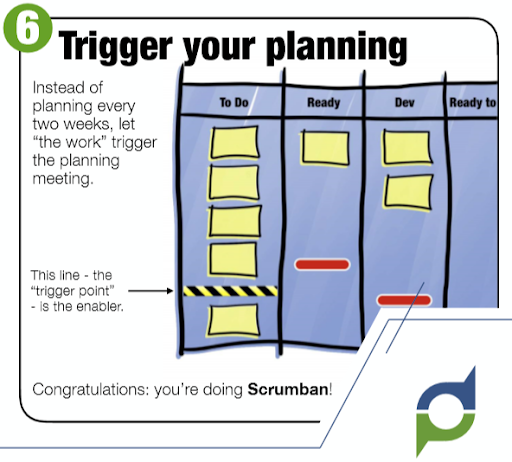
Image source: https://www.developmentthatpays.com/
We hope this moving from Scrum to Scrumban example made it easier for you to carry out the process seamlessly. So now that you are aware of the agile methodology what is scrumban, we hope you can incorporate the best practices for your various project management requirements.
Want to seamlessly incorporate the best practices of agile project management, including Scrumban, into your projects? Contact our team of software experts today to plan and execute your software project in the best way possible!
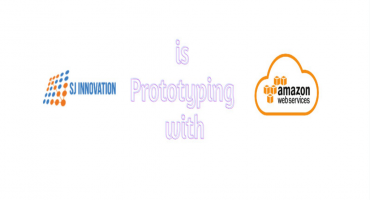
Prototyping Personalized E-Commerce with Amazon Web Services [AWS]
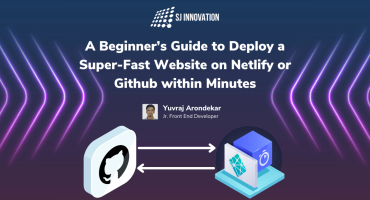
A Beginner’s Guide to Deploy a Super-Fast Website on Nelify or Github within Minutes
